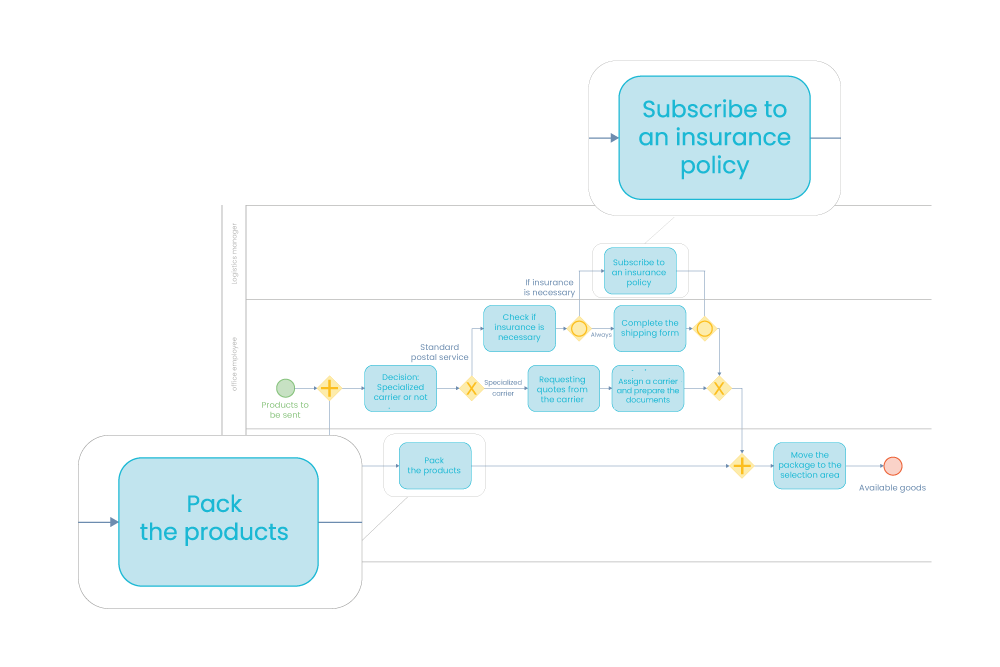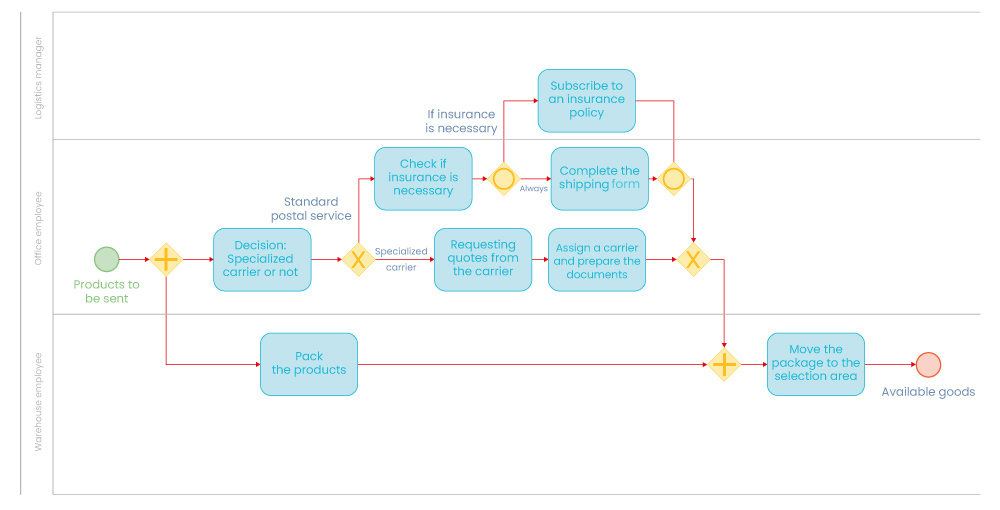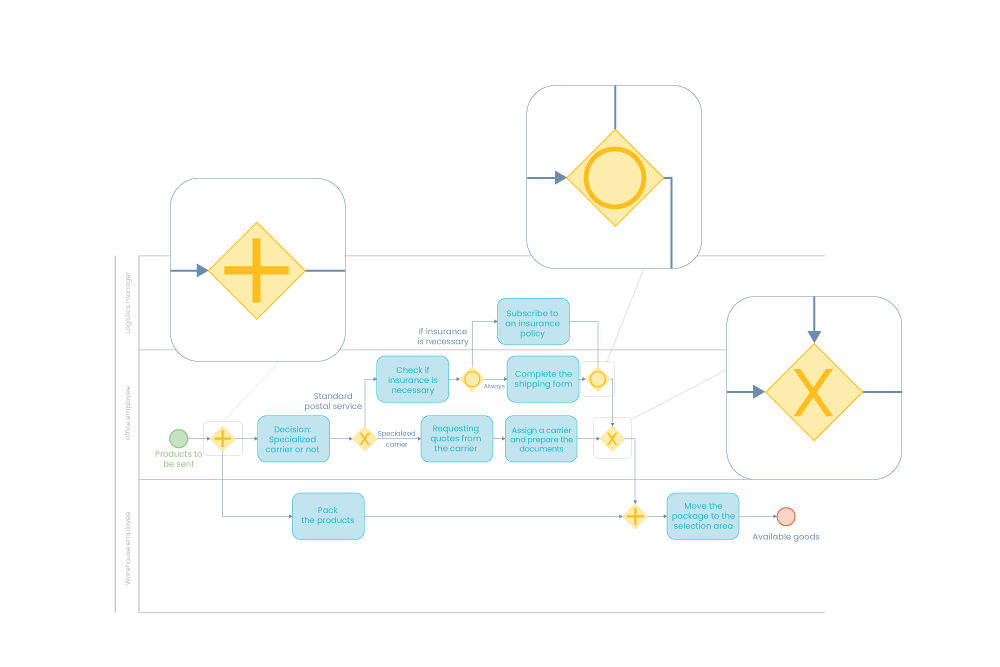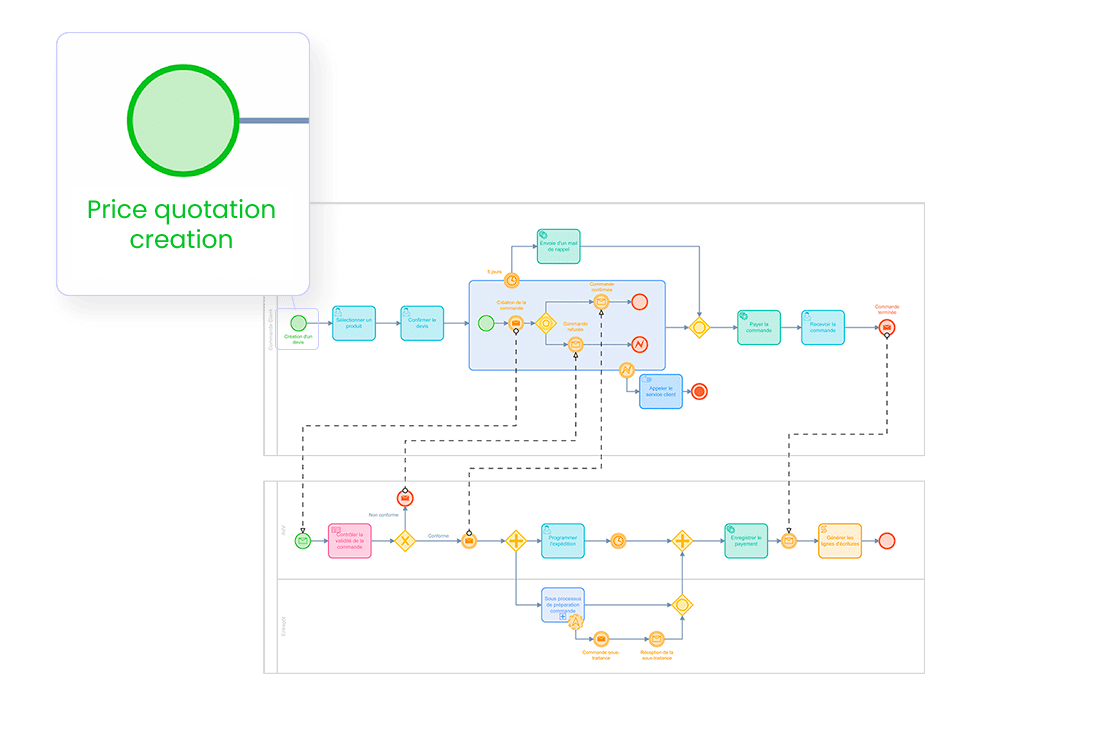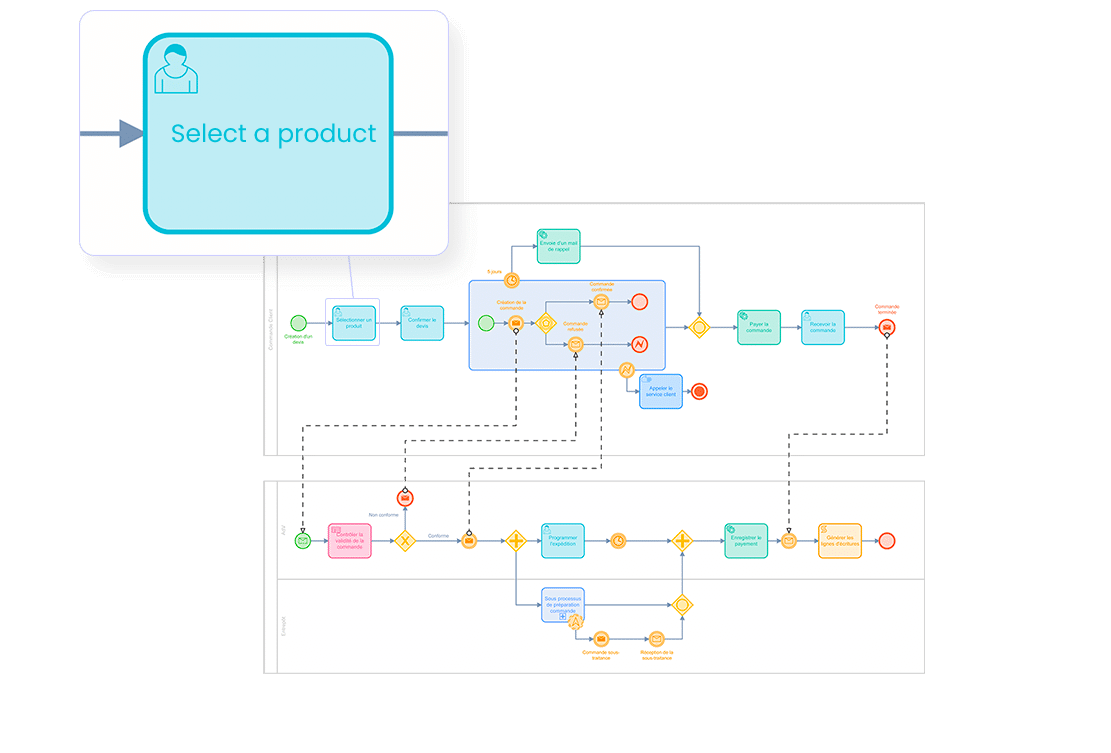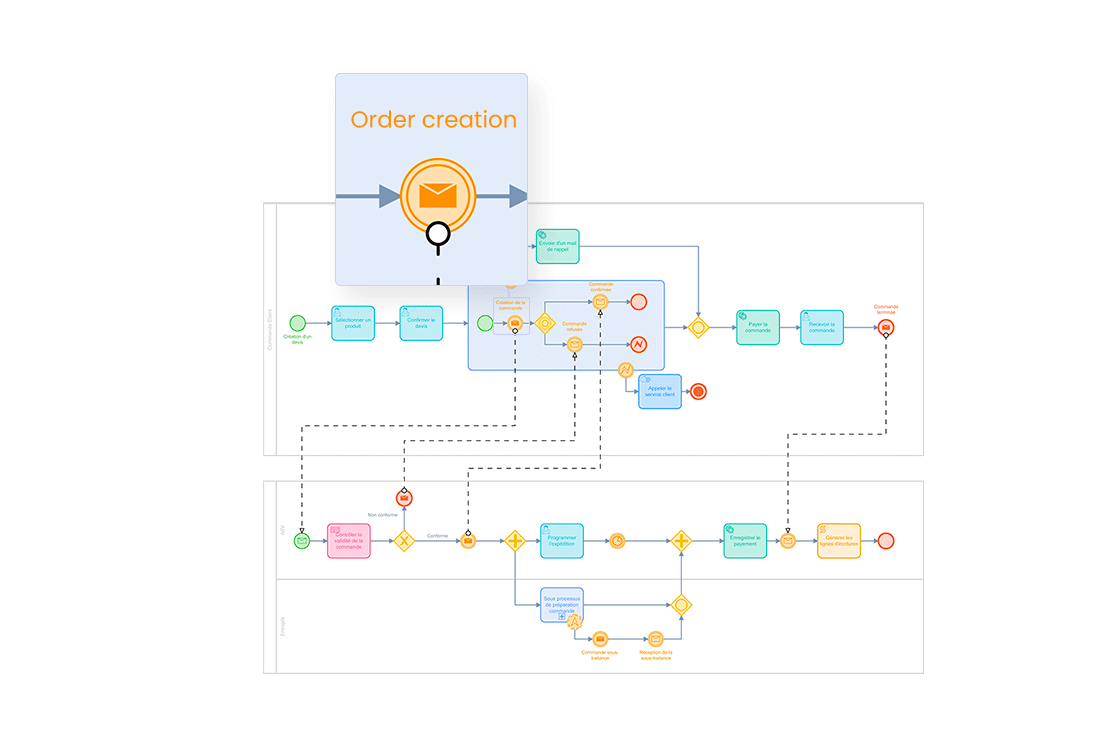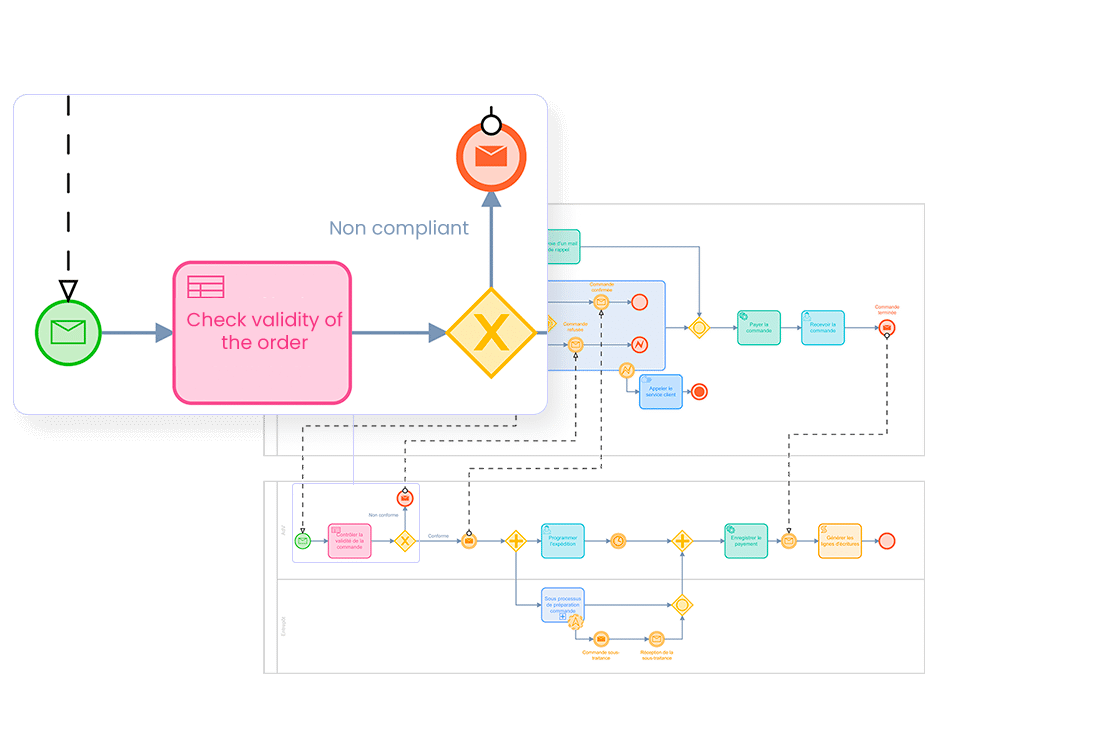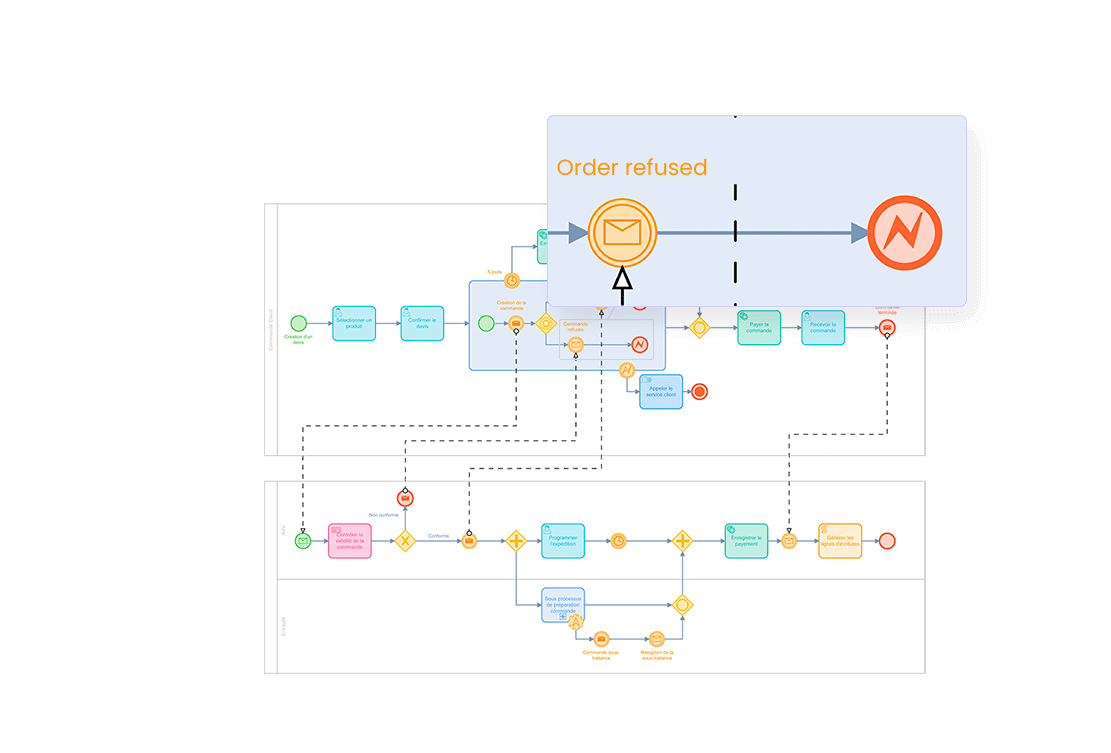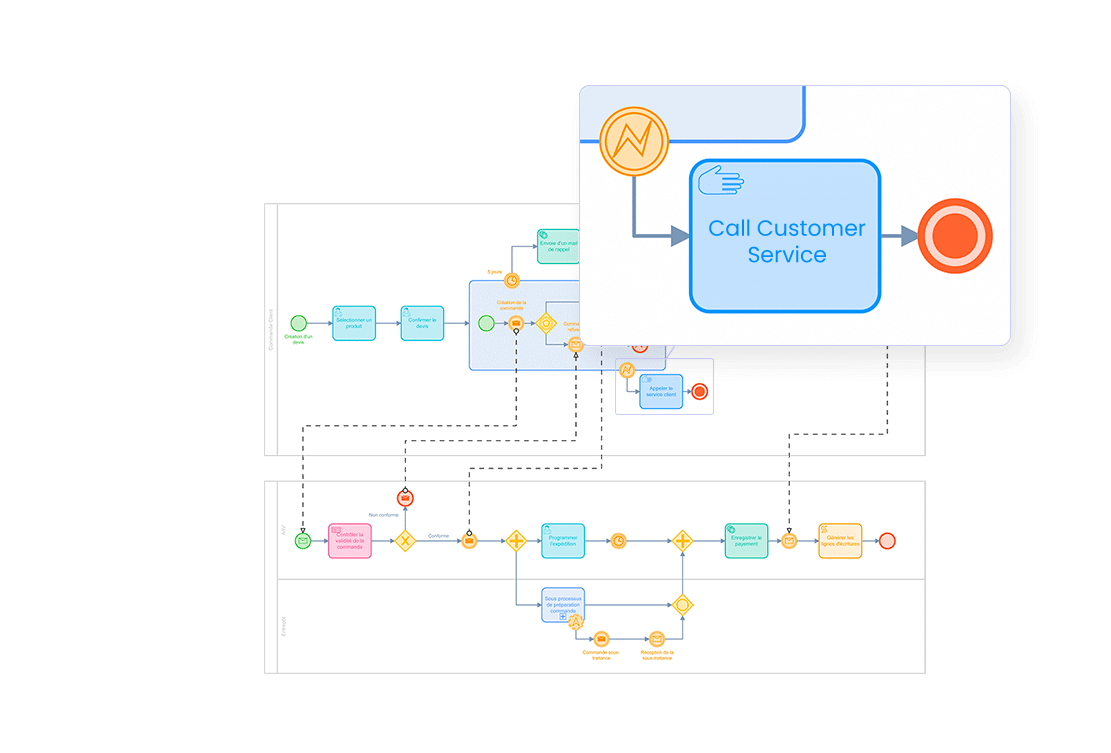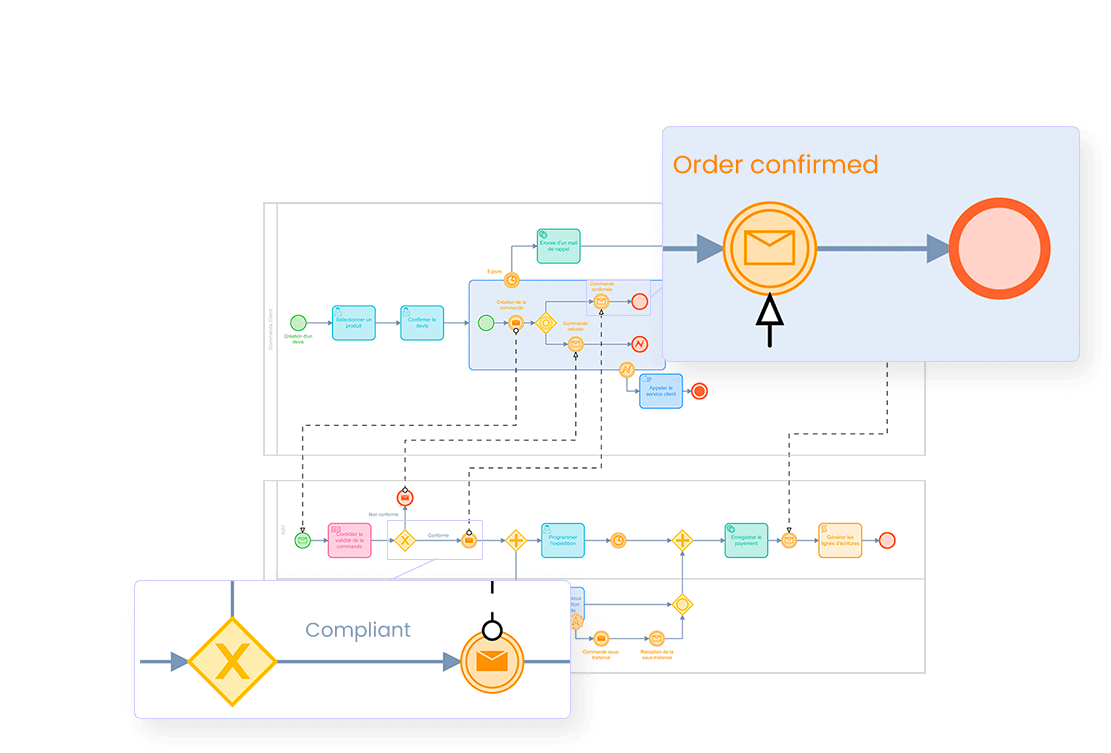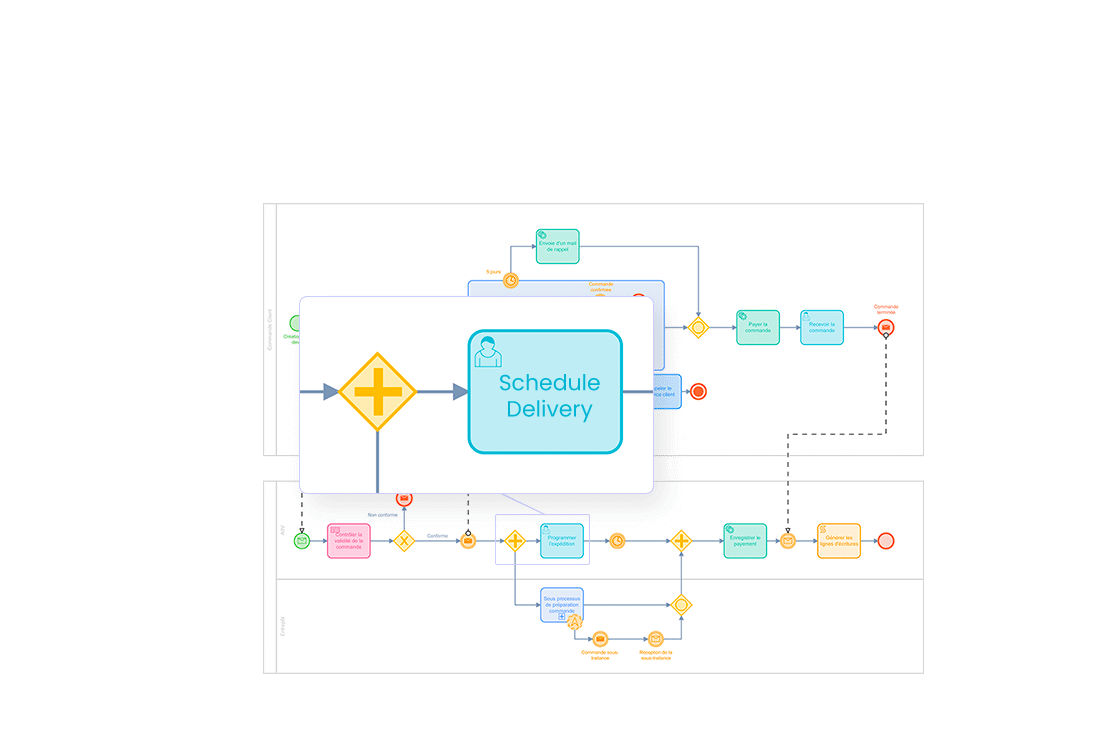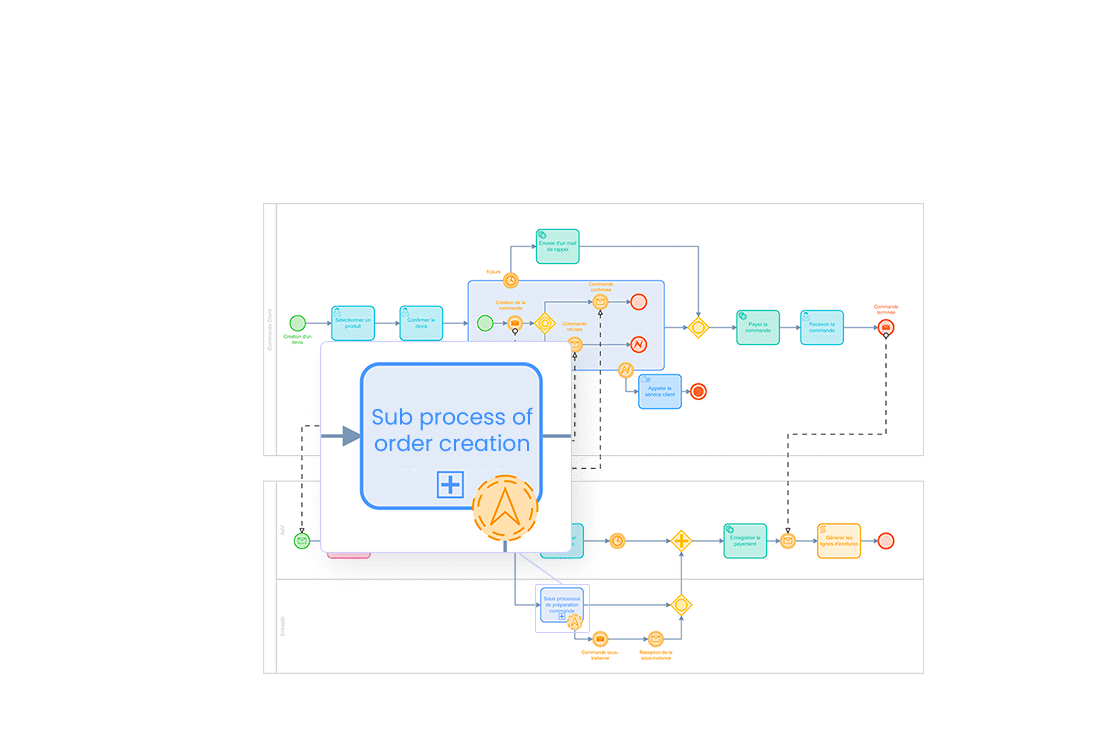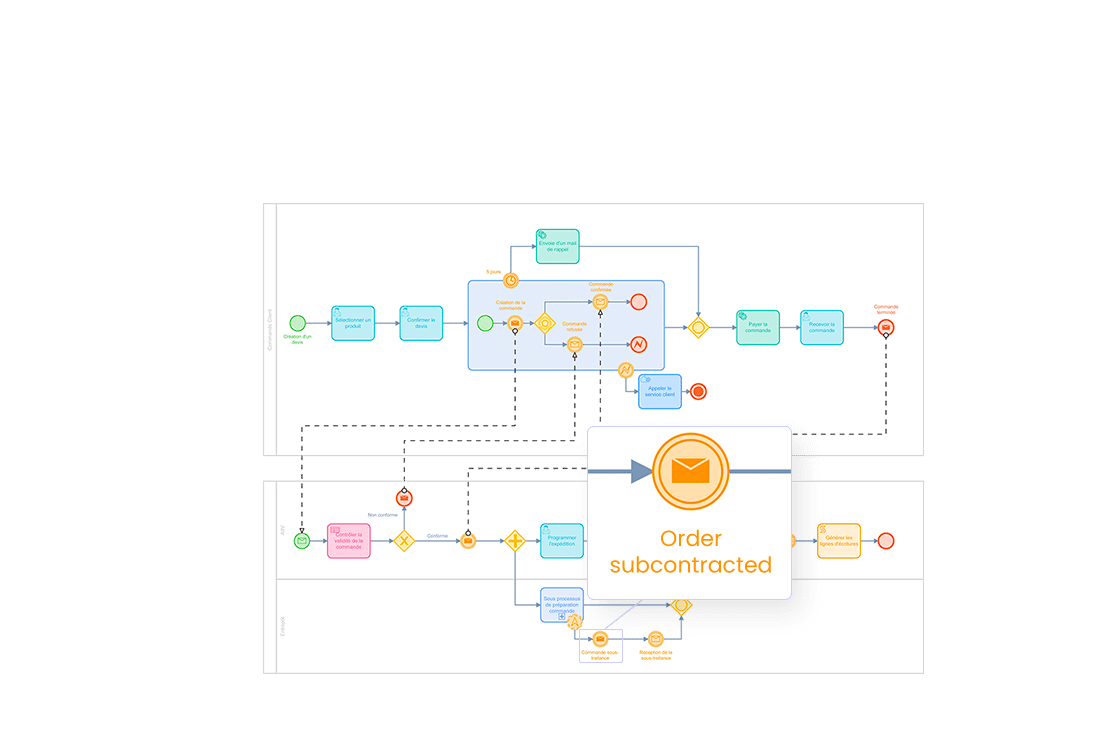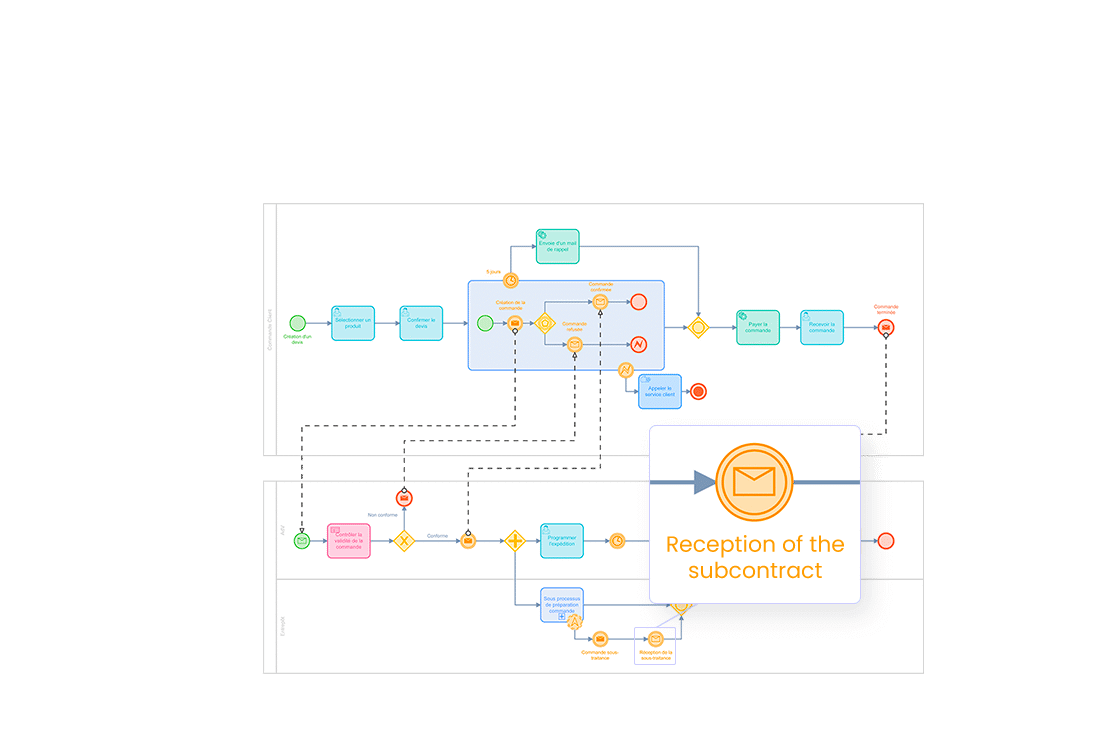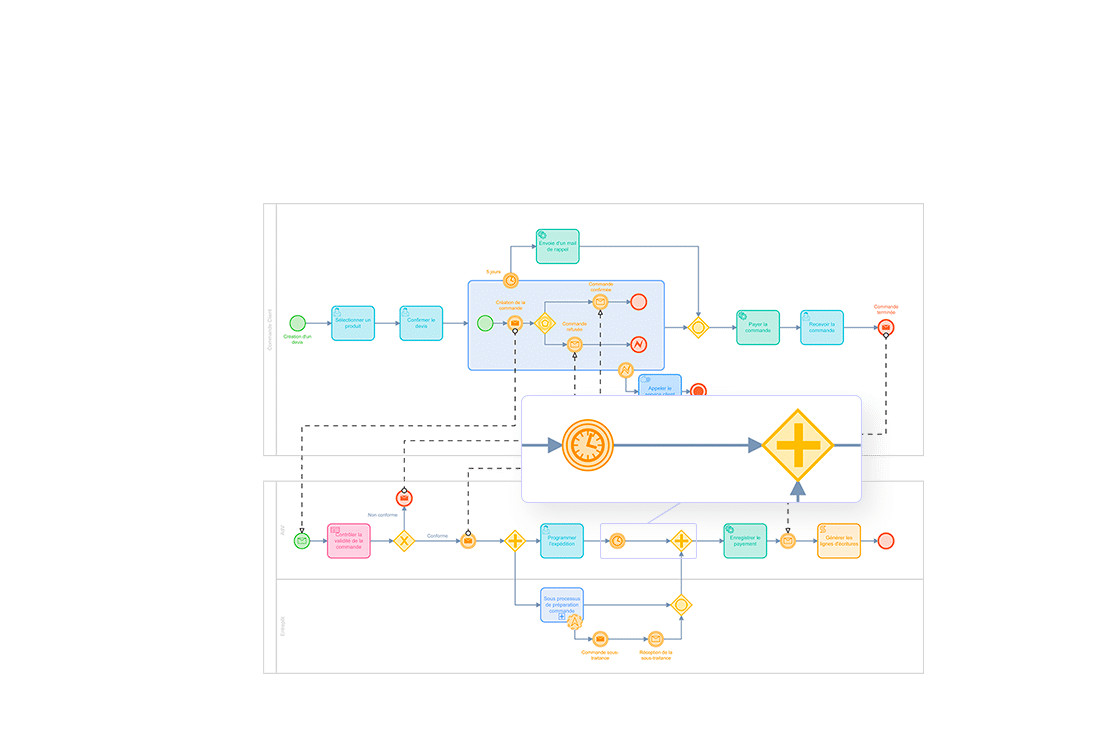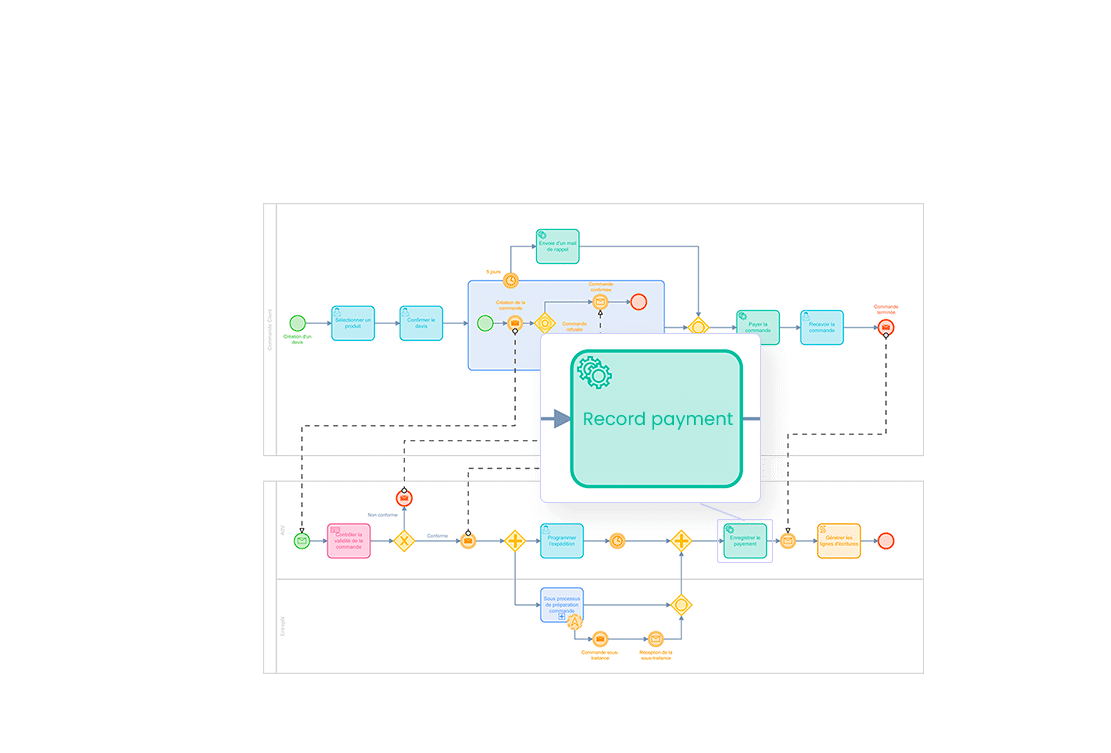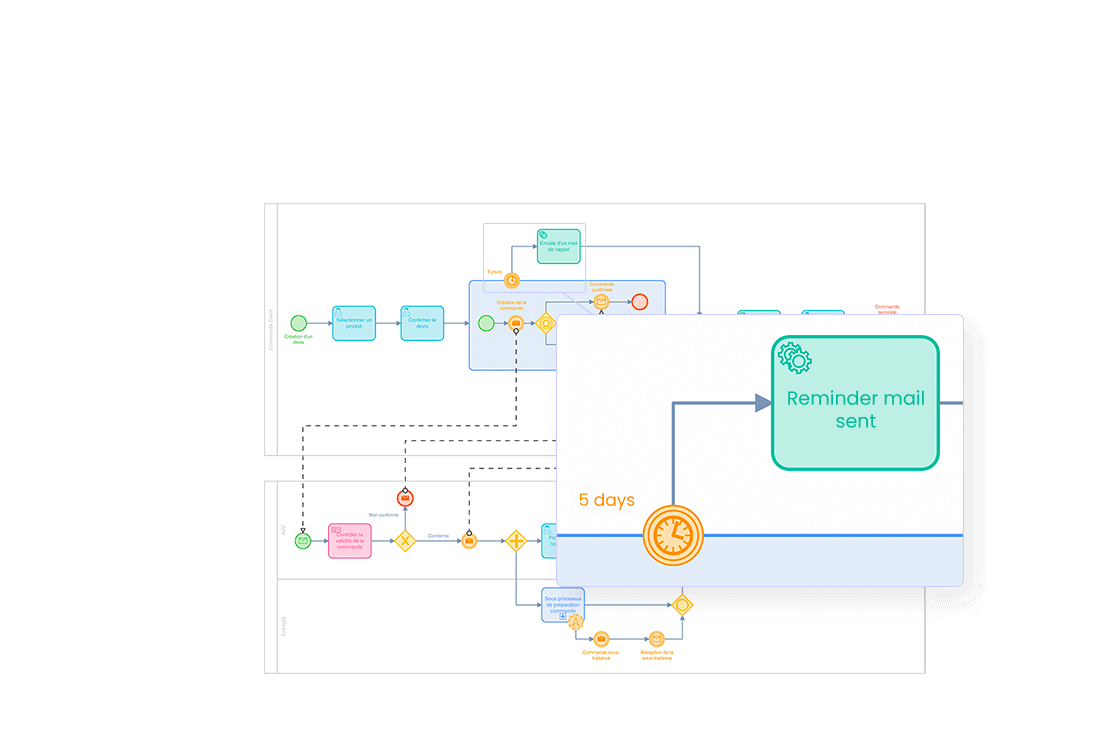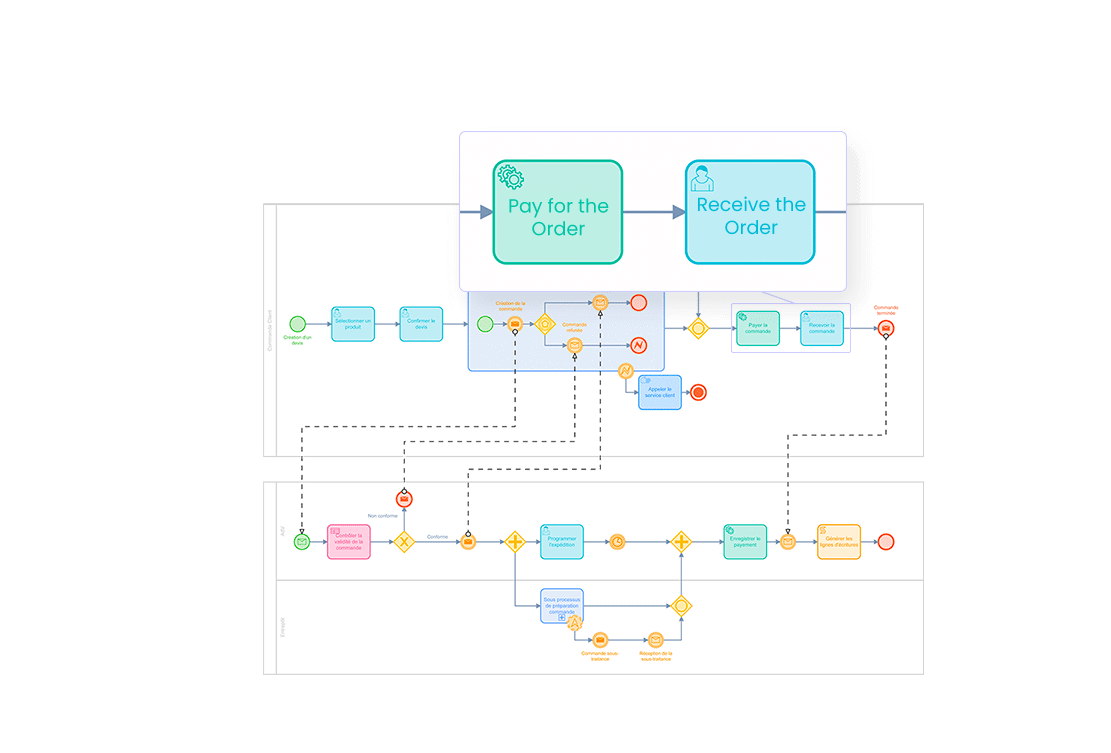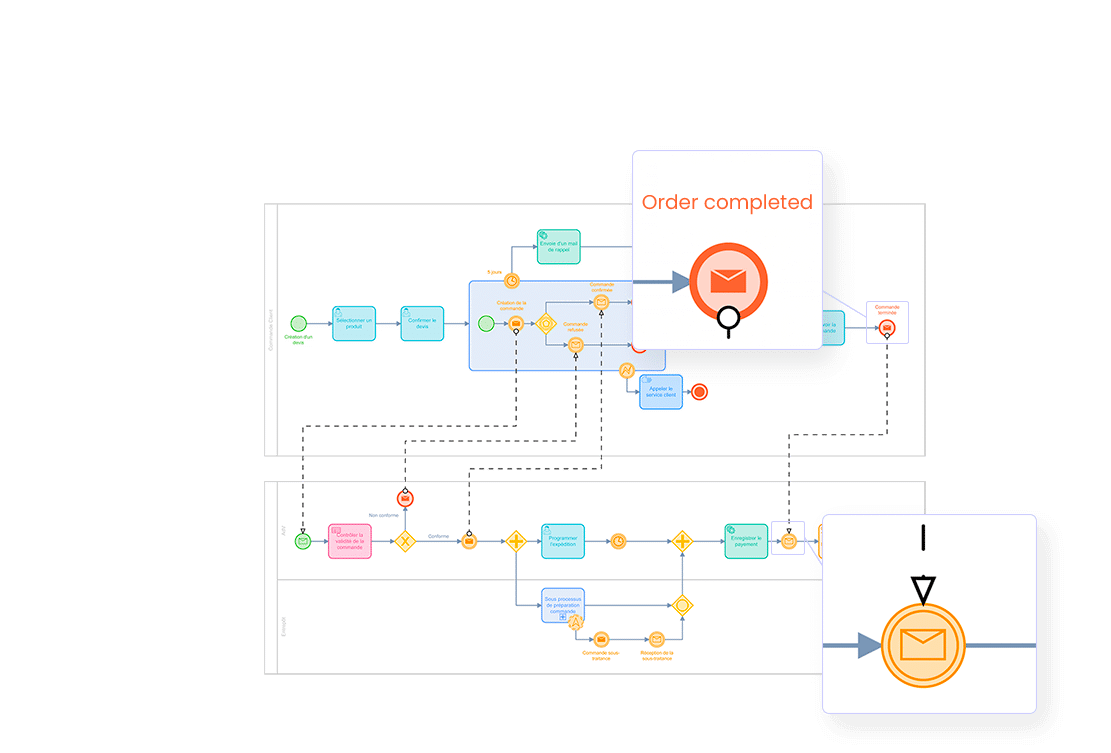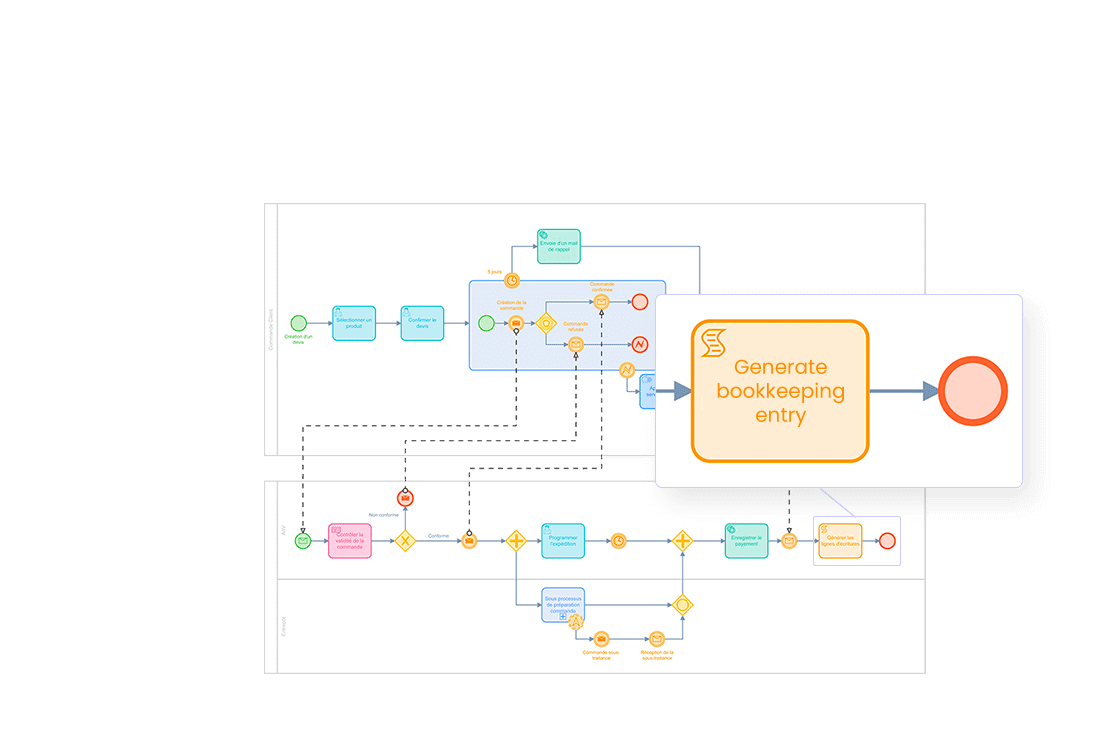What is the BPMN 2.0 standard?
The Business Process Model and Notation (BPMN) is a standard managed by an international organization, the Object Management Group (OMG), which is responsible for the UML standard. It was created in 2004, with the current version, 2.0, being active since 2013. The OMG (Object Management Group) is an international consortium whose goal is to standardize and promote the object model. The BPMN 2.0 standard has become an essential standard for business process modeling and has been the international standard ISO/IEC 195103 since July 2013. The BPMN standard is an essential collaborative tool for modeling your business processes.
The BPMN standard will present business processes as a diagram in which each symbol has a unique interpretation. Through this graphical representation, the BPMN standard models business processes. The standard makes it possible to visualize, formalize, standardize, and automate business processes by making them readable and accessible to all. Thus, in an organization, all the people likely to use these processes (engineers, managers, operational staff, or consultants) can communicate and instantly understand the BPM processes drawn by speaking the same language, i.e. the BPMN standard.
Contents
BPMN: a collaborative tool
BPMN is a collaborative tool in that it can be used and interpreted by all actors, whether they are functional or technical. Business managers will be able to easily design processes that can then be transposed into an application. Thanks to BPMN, technical actors can easily communicate with each other. The possible barrier that may exist between functional and technical profiles is erased thanks to this common, standardized, and accessible language.
This standard is a key component of business process management because it provides visibility into the sequence of business activities. It is used by many publishers.
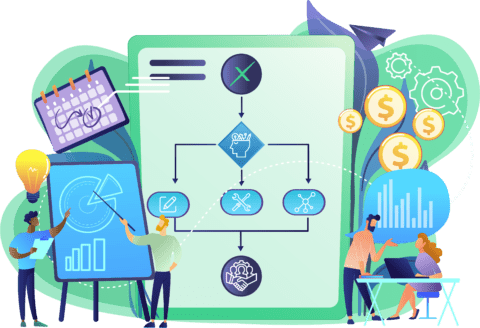
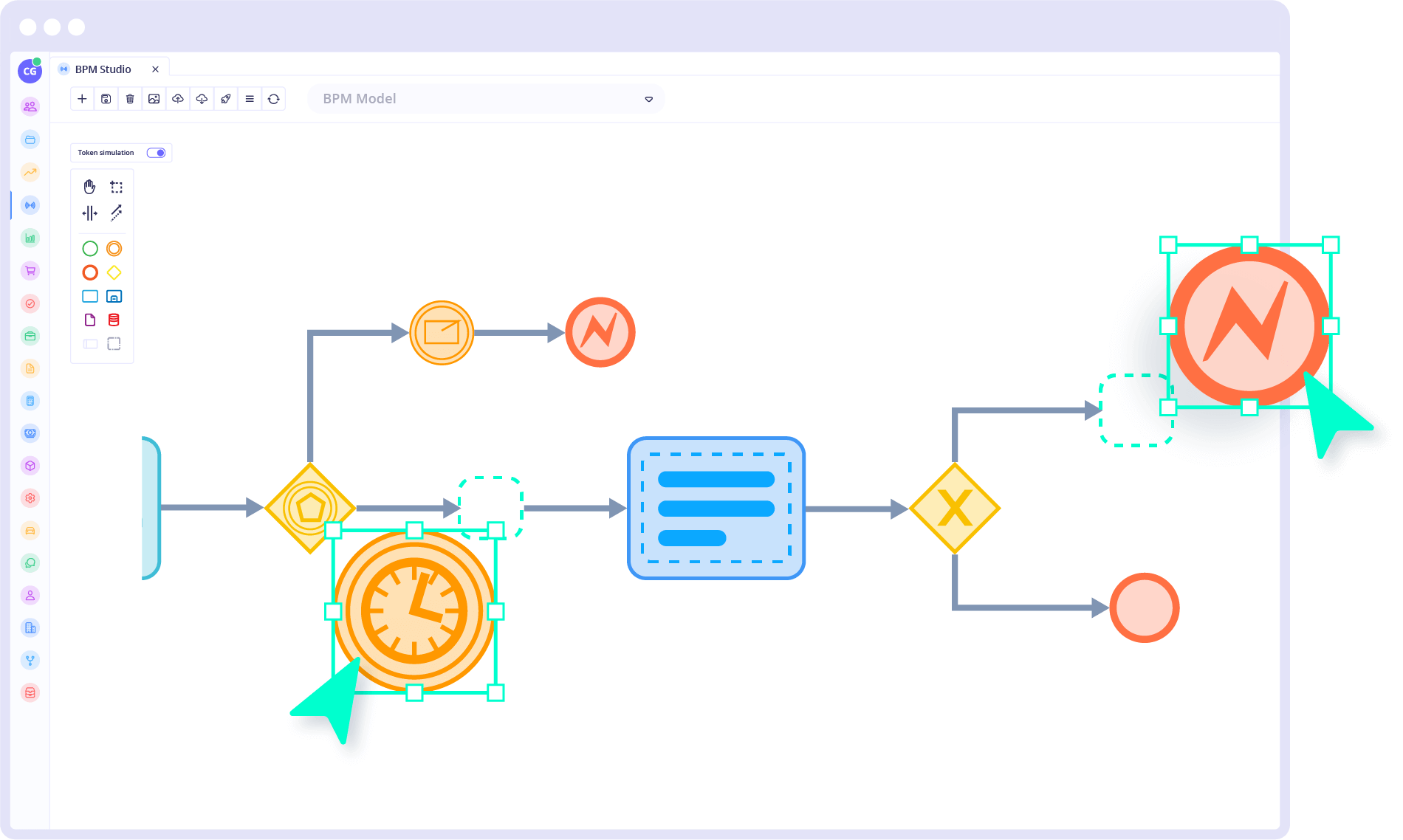
What is the objective of the BPMN 2.0 standard?
In an increasingly competitive environment, it is crucial to master the complexity of your company’s processes in order to gain agility. Being able to model and adapt your business processes is the result of unique know-how, which gives you a strong competitive advantage and ensures that your processes are optimal.
Today, the BPMN standard has become the norm for the visual formalization of processes. The need for business transformation in recent years has propelled the Low Code BPM to become a key tool for any company wishing to review their processes by integrating a digital solution.
The objective of BPMN is to provide a framework for the modeling of these processes through a clear, intuitive, and understandable notation for all. By modeling the different steps of a business process from A to Z in a common graphical representation framework, it allows an organization to share a single vision of the processes and to facilitate their execution. The information flows necessary to manage a process are then visually represented, which offers a better understanding. Indeed, visual tools can be easier to understand than text and they offer simplified communication between collaborators.
The main objective is to provide a standardized language so that all stakeholders in a business process can understand it. This allows for smoother collaboration and communication and increases business productivity.
What is a business process?
A business process is a structured set of tasks, human or automated actions, carried out in order to achieve a particular and predefined objective.
A business process involves business actors, each responsible for a specific activity. It can include sub-processes. A business process can also be outsourced. The BPMN standard allows an individual to model the business processes to build a standardized framework: first step in optimization.

What is the role of the process driver?
To carry out this process approach, it is necessary to designate a person in charge: a process approach pilot within your organization.
The main missions of this pilot are:
Coordinate process modeling, and decide on the most impactful decisions.
Audit the processes in order to identify possible blockages and dysfunctions.
Gather information during audits and through feedback from process actors.
Contribute to the company's policy of continuous improvement by streamlining processes and engaging employees in the optimization process.
Be the main contact for any external service providers involved in the process.
Lead and communicate to ensure team support.
What are the symbols and elements of BPMN 2.0 diagrams?
The BPMN standard provides a robust set of symbols to model different aspects of business processes. It is a set of flowcharts allowing everyone to visually understand the processes through a variety of graphic elements.
We will take the following example to illustrate a process in BPMN:
- Flow objects (activities, events, and branches) are triggers that illustrate a behavior within a business process. These flow objects can start, modify, or end a process.
- The “activities“, which allow the execution of tasks, sub-processes, and activities, are actions to be carried out in order to achieve the objective of the process. They can involve human activity such as user and manual tasks, but can also be automated in the context of tasks, services, and scripts. If necessary, sub-processes can be used to specify and isolate behaviors. They are represented by rectangles with rounded corners.
- The “transitions” or “connections” link the different steps together.
- The “gateways” direct the flows towards the following stages.
Gateways:
Gateways are steps in the process of divergences or convergences of the flow. They are able to describe the sequence flow path of a process.
They are represented by diamonds, in the center of which is a symbol that indicates the possible flow outputs. An exclusive gateway can be represented without a pictogram, both possibilities exist.
We can see 5 types of gateways: parallel, exclusive, inclusive, event-based, and complex:

“Parallel” process gateways parallelize or merge the flow to indicate that tasks can be performed simultaneously.

“Exclusive” gateways direct the process to a single transition.

“Inclusive” gateways can conditionally parallelize.

“Event-based” gateways have conditions based on events. They are used to put the process on hold for different events.

“Complex” gateways are used for the most complex flows of the process; they are used when the flow behavior cannot be expressed by another type of gateway.
Data objects:
These objects can provide important and strategic information about the data in a process.
Discover an example illustrating the main basic elements of a process in BPMN:
To better understand how a process works in BPMN, we need to imagine a process instance, like a token that advances in the process, and that can split or merge according to the actions to be performed during the mangement of this process instance.
The two processes that we will present are life cycle processes of a sales order from the quote to the accounting entries.
In this example, we will illustrate the choice of a type of transport for an order’s shipment and the process begins with the starting event “Creation of an estimate.” east
When the quote is confirmed, we enter a sub-process. The first step is to create the order and report it to the sales administration.
Sales and distribution has no direct role in the first instance as the order validity check is done via a business rule task.east
Various input parameters are used to automatically determine whether or not the order is acceptable. In case of non conformity, a dispatch message is generated to inform the customer that the order is refused. east
This error is then recovered at the border of the sub-process and requires the customer to make a call to the customer service department before definitively ending the entire process. east
The second possible scenario in sales and distribution is to assume that the order has been accepted. We will, once again, send this information to the customer, but this time via an intermediate message event to confirm that the order has been received. east
For sales administration, assuming that the order can be fulfilled immediately, you will need to schedule the shipment. east
In parallel, we will signal to the warehouse that it is necessary to initiate a sub-process of order preparation, the sub-process is not detailed below: east
On the other hand, we have allowed for the possibility that during this sub-process of order preparation, the latter may require subcontracting. east
In this case, we will outsource the processing of this order to the subcontractor and wait for their feedback when the subcontracted order is ready. east
In parallel, once the shipment is ready to be sent when the shipping date is reached, we will continue our process on the sales administration. east
The sales administration must record a payment, only on the condition that the payment has been sent. east
Going back to our sales order, we did receive the information that the order was confirmed.
Now let’s look at this 5-day border event timer which, if after 5 days we have still not received any news, it automatically sends a reminder email.east
Let’s go back to the classic process when the order has been confirmed and the customer is invited to pay for the order. While waiting for the order to be received, the process stalls at the “receive order” task. east
As soon as the order is received, an end-of-message event is sent to the second process (sales administration), indicating that the order has been received. east
When the order has been received, we will automatically generate the entry lines in our system via a script task and end the entire life process of an order, from its quotation to the accounting entry. east
BPMN vs. BPM: what is the difference?
The difference between BPM and BPMN is simple:
BPM
Business Process Management is a method of organization.
BPMN
BPMN is a codified standard.
What are the advantages of BPM?
There are many advantages in using a BPM tool for business process management:
A visual and clear notation that allows for controlling complexity
An automatable common format
A unified language that improves collaboration as it can be understood even outside your organization
Interoperability across multiple organizations and tools
An evolving standard thanks to an active community, to meet the ever-changing business needs

How to succeed in modeling?
Identify the trigger(s) of the process and the steps that mark the process.
Clearly visualize the objective of the process. In order to produce an efficient model, the goal to be reached must be clearly explained and validated by the business actors. A review and validation phase of the processes with the key business actors is highly recommended.
Finally, define realistic and quantifiable performance indicators, so you can easily judge the efficiency of your processes.
In attempting to optimize processes, it is quite easy to make them more complex. So keep in mind that clarity and simplicity are the key words for successful modeling.
Why choose Axelor’s BPM software to model your business processes?
The Axelor BPM software, in compliance with the BPMN 2.0 standard, is designed to be easy to use and intuitive through a visual interface. It allows you to model, implement, execute, and control the different steps of your business process. It plays a key role in reducing costs, improving your organizational responsiveness and optimizing your productivity.

The advantage of using Axelor’s BPM lies in its ability to be understandable for stakeholders at all levels (technical or non-technical). Easily create professional BPMN programming flowcharts with ready-to-use templates or with intuitive features like drag and drop.
Although BPMN is a synthetic language, it is nonetheless complete and powerful. The richness of the available pictograms makes it possible to model all business processes, even the most complex ones. For these reasons, the use of the BPMN standard represents a real competitive advantage as well as an accelerator of performance for your company.
To go further, don’t hesitate to discover our white paper on the BPMN standard or to follow our YouTube channel where we regularly post tutorials and case studies.

